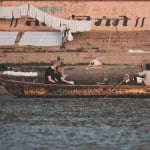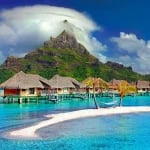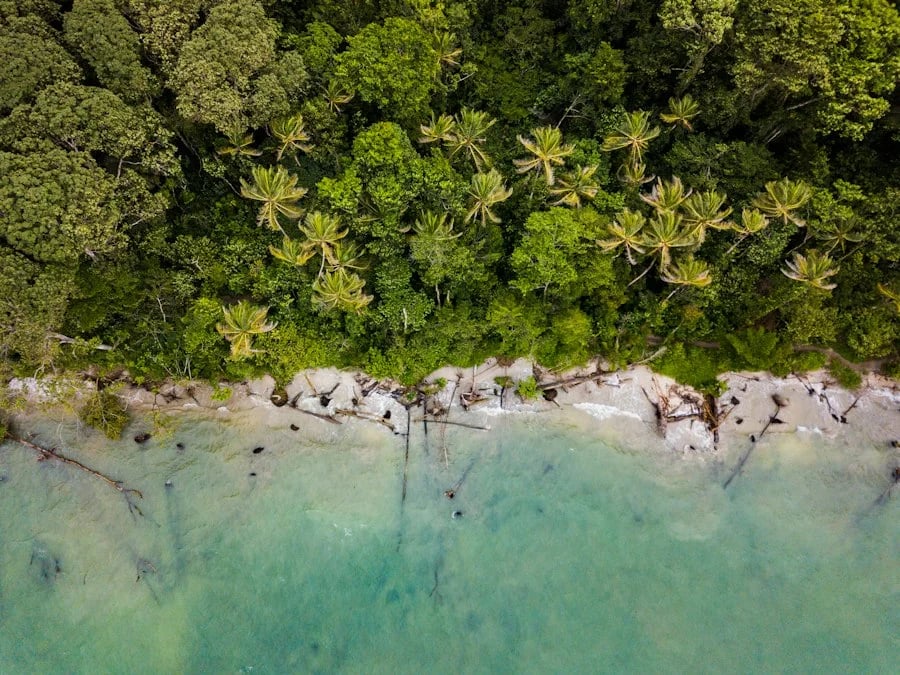
Discovering the Pura Vida Lifestyle: A Journey Through Costa Rica

Traveling to Costa Rica doesn’t have to break the bank. With some careful planning and research, you can find affordable flights, accommodations, and transportation options that fit your budget. When it comes to flights, flexibility is key. Look for deals on various travel websites or sign up for fare alerts to be notified of any price drops. Consider flying into a different airport or booking a multi-city itinerary to save money.
When it comes to accommodations, there are plenty of budget-friendly options available. Hostels and guesthouses are popular choices for backpackers and budget travelers. If you prefer more privacy, consider renting an apartment or booking a room through platforms like Airbnb. Another option is to stay in eco-lodges or ecolodges that offer affordable rates while still providing a unique and sustainable experience.
Transportation in Costa Rica can also be affordable if you know where to look. Public buses are a cost-effective way to get around the country, with routes connecting major cities and tourist destinations. Renting a car can be more expensive, but it offers flexibility and convenience, especially if you plan on exploring remote areas. Alternatively, you can use shared shuttles or taxis for shorter distances.
To save money on food and activities, consider eating at local “sodas” or small family-run restaurants that offer traditional Costa Rican cuisine at affordable prices. Look for happy hour specials or local markets where you can buy fresh produce and snacks. When it comes to activities, prioritize the ones that interest you the most and research for any discounts or promotions available. Many tour operators offer package deals or group discounts, so it’s worth checking their websites or contacting them directly.
Vacation Packages: Finding the Perfect Itinerary for Your Pura Vida Journey
If you prefer a more structured travel experience, vacation packages can be a great option. Costa Rica offers a wide range of vacation packages tailored to different interests and budgets. Whether you’re looking for an adventure-filled trip, a relaxing beach getaway, or a cultural immersion experience, there’s a package that suits your needs.
Popular vacation packages in Costa Rica often include visits to iconic destinations such as Arenal Volcano, Monteverde Cloud Forest, Manuel Antonio National Park, and Tortuguero National Park. These packages typically include transportation, accommodations, guided tours, and some meals. However, they can be customized to fit your preferences and budget.
Working with a travel agent can be beneficial when planning your trip to Costa Rica. They have extensive knowledge of the country and can help you navigate through the various options available. Travel agents can also provide insider tips and recommendations based on your interests and budget. Additionally, they often have access to exclusive deals and discounts that may not be available to the general public.
Adventure Tourism: Exploring Costa Rica’s Natural Wonders
Costa Rica is a paradise for adventure seekers. The country’s diverse landscapes offer a wide range of thrilling activities, from zip-lining through the rainforest canopy to white-water rafting down raging rivers. Hiking enthusiasts can explore numerous trails that lead to breathtaking waterfalls, volcanic craters, and hidden gems.
When participating in adventure activities, it’s important to choose reputable tour operators and guides. Look for companies that prioritize safety and have a good track record. Read reviews and ask for recommendations from fellow travelers or locals. It’s also essential to follow the instructions given by your guides and use proper safety equipment.
Staying safe while participating in adventure activities in Costa Rica requires common sense and caution. Always listen to your guides and follow their instructions. Be aware of your physical limitations and choose activities that are suitable for your fitness level. Stay hydrated, wear appropriate clothing and footwear, and protect yourself from the sun with sunscreen and a hat.
Luxury Travel: Indulging in the Finest Accommodations and Activities
| Activity | Location | Duration | Difficulty Level |
|---|---|---|---|
| Hiking | Arenal Volcano National Park | 4 hours | Moderate |
| White Water Rafting | Pacuare River | 1 day | Difficult |
| Ziplining | Monteverde Cloud Forest Reserve | 2 hours | Easy |
| Surfing | Tamarindo Beach | 2 hours | Intermediate |
| Snorkeling | Manuel Antonio National Park | 3 hours | Easy |
For those seeking a more luxurious travel experience, Costa Rica offers a range of high-end accommodations and activities. From luxury resorts nestled in the rainforest to private tours tailored to your preferences, you can indulge in the finest that Costa Rica has to offer.
When it comes to luxury accommodations, Costa Rica boasts world-class resorts that provide top-notch amenities, stunning views, and impeccable service. Many of these resorts offer spa facilities, gourmet dining options, and exclusive access to secluded beaches or private nature reserves. Whether you’re looking for a romantic getaway or a pampering retreat, you’ll find a luxury resort that suits your needs.
To make the most of your luxury travel experience in Costa Rica, it’s important to do thorough research and read reviews before making any reservations. Look for resorts that have received positive feedback from previous guests and have a reputation for excellence. Consider what amenities are important to you and choose a resort that offers them. It’s also worth contacting the resort directly to inquire about any special packages or promotions they may have.
Budget Travel Tips: Making the Most of Your Pura Vida Experience on a Budget
Traveling on a budget doesn’t mean you have to miss out on the Pura Vida experience in Costa Rica. With some careful planning and creativity, you can make the most of your trip without breaking the bank.
When it comes to accommodations, consider staying in budget-friendly options such as hostels, guesthouses, or eco-lodges. These types of accommodations often offer affordable rates while still providing a comfortable and unique experience. Another option is to camp in designated areas or stay in community-based tourism projects that offer affordable accommodations and opportunities to interact with locals.
Transportation can also be budget-friendly if you choose wisely. Public buses are a cost-effective way to get around the country, with fares typically ranging from a few dollars to around $10 depending on the distance. Renting a bicycle is another affordable option, especially in cities or beach towns where cycling is popular. Additionally, carpooling or sharing taxis with other travelers can help reduce transportation costs.
To save money on food and drinks, consider eating at local “sodas” or small family-run restaurants that offer traditional Costa Rican cuisine at affordable prices. These establishments often serve generous portions at reasonable prices. Look for happy hour specials or local markets where you can buy fresh produce and snacks at lower prices than tourist areas.
Experiencing Costa Rica’s culture and natural beauty doesn’t have to be expensive. Many of the country’s national parks and beaches offer free or low-cost activities such as hiking, swimming, and wildlife spotting. Take advantage of these opportunities to immerse yourself in Costa Rica’s natural wonders without spending a fortune.
Discovering Costa Rica’s Beaches: Sun, Sand, and Surf
Costa Rica is renowned for its stunning beaches, which offer something for everyone, from sunbathing and swimming to surfing and snorkeling. Whether you’re looking for a lively beach with a vibrant nightlife or a secluded stretch of sand where you can relax in peace, Costa Rica has it all.
Some of the best beaches in Costa Rica for swimming include Manuel Antonio Beach, Playa Conchal, and Playa Samara. These beaches have calm waters and are ideal for families or those who prefer a more relaxed beach experience. Playa Tamarindo and Playa Hermosa are popular destinations for surfers, with consistent waves and a vibrant surf culture.
When it comes to accommodations, there are plenty of options available near Costa Rica’s beaches. From budget-friendly hostels to luxury beachfront resorts, you can find accommodations that suit your preferences and budget. Consider staying in beach towns such as Tamarindo, Jaco, or Puerto Viejo, where you’ll find a wide range of accommodations, restaurants, and activities.
While enjoying Costa Rica’s beaches, it’s important to stay safe. Be aware of the current conditions and any warnings or advisories issued by local authorities. Follow the instructions of lifeguards and avoid swimming in areas with strong currents or rip tides. Protect yourself from the sun by wearing sunscreen, a hat, and sunglasses. It’s also advisable to keep an eye on your belongings and avoid leaving valuables unattended on the beach.
Exploring Costa Rica’s National Parks: A Window into the Country’s Biodiversity
Costa Rica is known for its commitment to environmental conservation and is home to an impressive array of national parks and protected areas. These parks offer visitors a unique opportunity to explore the country’s rich biodiversity and learn about its unique ecosystems.
Some of the most popular national parks in Costa Rica include Manuel Antonio National Park, Tortuguero National Park, Arenal Volcano National Park, and Corcovado National Park. Each park has its own unique features and offers a range of activities such as hiking, wildlife spotting, and guided tours.
When visiting national parks in Costa Rica, it’s advisable to join guided tours or hire a local guide. They have extensive knowledge of the park’s flora and fauna and can help you spot wildlife that you might otherwise miss. Additionally, they can provide valuable insights into the park’s history, conservation efforts, and ongoing research projects.
Respecting the environment and wildlife is crucial when exploring Costa Rica’s national parks. Follow the park’s rules and regulations, stay on designated trails, and avoid disturbing or feeding wildlife. It’s important to leave no trace and take your trash with you when leaving the park. By being a responsible visitor, you can help preserve these natural wonders for future generations to enjoy.
Getting to Know Costa Rica’s Culture: Food, Music, and Traditions
Costa Rican cuisine is a reflection of the country’s diverse cultural heritage and natural resources. Traditional dishes often feature rice, beans, plantains, corn, and fresh seafood. Gallo Pinto, a combination of rice and beans, is considered the national dish of Costa Rica. Other popular dishes include casado (a plate with rice, beans, meat or fish, salad, and plantains), ceviche (marinated raw fish or seafood), and arroz con pollo (rice with chicken).
To experience Costa Rican music and dance, look for local festivals or cultural events where traditional performances take place. Salsa, merengue, cumbia, and reggae are popular genres in Costa Rica. You can also visit bars or clubs that offer live music performances or dance classes.
Costa Ricans are known for their warm hospitality and friendly nature. It’s common to greet people with a handshake or a kiss on the cheek. Ticos, as Costa Ricans are often called, value family and community and often gather for social events or celebrations. It’s not uncommon to be invited to a local’s home for a meal or to participate in a traditional ceremony or festival.
Sustainable Tourism: How to Be a Responsible Traveler in Costa Rica
Costa Rica is a global leader in sustainable tourism and has made significant efforts to protect its natural resources and promote responsible travel practices. As a visitor, you can contribute to these efforts by being a responsible traveler and reducing your environmental impact.
One of the key principles of sustainable tourism is minimizing your carbon footprint. Consider offsetting your carbon emissions by participating in reforestation projects or supporting renewable energy initiatives. Choose eco-friendly accommodations that have implemented sustainable practices such as water conservation, waste management, and energy efficiency.
Supporting local communities and businesses is another important aspect of sustainable tourism. Opt for locally-owned accommodations, restaurants, and tour operators that contribute to the local economy. Purchase souvenirs or handicrafts made by local artisans rather than mass-produced items. Engage with the local community by participating in cultural activities or volunteering for conservation projects.
Respecting the environment and wildlife is crucial when visiting Costa Rica. Follow the principles of Leave No Trace and avoid littering or damaging natural habitats. Stay on designated trails when hiking and avoid touching or feeding wildlife. It’s important to remember that you are a guest in their home and should treat it with respect.
In conclusion, Costa Rica offers a diverse range of experiences for travelers seeking adventure, relaxation, and cultural immersion. Whether you’re on a budget or looking for luxury, there are options available to suit your preferences and budget. By embracing the Pura Vida lifestyle and being a responsible traveler, you can make the most of your Costa Rican journey while preserving its natural beauty for future generations.
If you’re a fan of tropical paradises, you won’t want to miss out on Costa Rica. This stunning country is known for its lush rainforests, pristine beaches, and abundant wildlife. Whether you’re looking to relax on the beach, go hiking in the jungle, or try your hand at surfing, Costa Rica has something for everyone. If you’re interested in learning more about this incredible destination, check out this article on Destination Mate: “Maui: A Tropical Paradise Awaiting Your Footprints”.
FAQs
What is Costa Rica?
Costa Rica is a country located in Central America, bordered by Nicaragua to the north, Panama to the southeast, the Pacific Ocean to the west, and the Caribbean Sea to the east.
What is the capital of Costa Rica?
The capital of Costa Rica is San Jose.
What is the population of Costa Rica?
As of 2021, the population of Costa Rica is approximately 5.1 million people.
What is the official language of Costa Rica?
The official language of Costa Rica is Spanish.
What is the currency of Costa Rica?
The currency of Costa Rica is the Costa Rican colón.
What is the climate like in Costa Rica?
Costa Rica has a tropical climate with two seasons: a dry season from December to April and a rainy season from May to November. Temperatures are generally warm year-round.
What are some popular tourist attractions in Costa Rica?
Some popular tourist attractions in Costa Rica include Arenal Volcano, Manuel Antonio National Park, Monteverde Cloud Forest Reserve, Tortuguero National Park, and the beaches of Guanacaste.
Is Costa Rica a safe country to visit?
Costa Rica is generally considered a safe country for tourists to visit. However, visitors should still exercise caution and be aware of their surroundings, especially in crowded areas or at night.
Recent Posts


Exploring the Spiritual Capital of India: Varanasi, Uttar Pradesh

